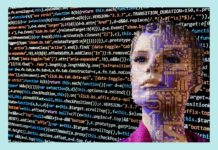Introduction
In the ever-evolving landscape of artificial intelligence (AI), reinforcement learning has emerged as a cornerstone technology, propelling machines toward higher levels of autonomy and problem-solving capabilities.
The amalgamation of sophisticated algorithms, massive datasets, and computing power has facilitated groundbreaking advancements in reinforcement learning, paving the way for applications in diverse domains, from robotics to finance. In this article, we delve into the latest developments in reinforcement learning, exploring its key components, challenges, and real-world applications.
Understanding Reinforcement Learning
Reinforcement learning is a branch of machine learning where an agent learns to make decisions by interacting with its environment. The agent takes actions and receives feedback in the form of rewards or punishments. The goal is for the agent to learn a policy—a strategy that maps observations to actions—maximizing the cumulative reward over time.
Key Components of Reinforcement Learning
Agent: The entity responsible for making decisions and taking actions in the environment.
Environment: The external system with which the agent interacts, presenting challenges and opportunities.
State: A representation of the current situation or configuration of the environment.
Action: The decision or move made by the agent at a given state.
Reward: A numerical value that indicates the immediate benefit or cost associated with an action.
Policy: The strategy or set of rules that the agent follows to determine its actions.
Recent Technological Advances
1. Deep Reinforcement Learning (DRL)
Deep reinforcement learning involves the integration of deep neural networks with reinforcement learning algorithms. This combination has proven to be exceptionally powerful, enabling machines to handle complex and high-dimensional input data, such as images and sensor readings.
The advent of deep Q-networks (DQN), actor-critic architectures, and policy gradient methods has significantly enhanced the learning capabilities of agents. DeepMind’s AlphaGo, which defeated world champion Go players, is a notable example of the prowess of deep reinforcement learning in tackling intricate problems.
2. Transfer Learning
Transfer learning has become a focal point in reinforcement learning research. This approach involves training an agent on one task and then leveraging the acquired knowledge to accelerate learning in a different but related task. Transfer learning not only enhances the efficiency of training but also allows models to adapt to new environments more rapidly.
3. Meta-Learning
Meta-learning, or learning to learn, is another frontier that has gained prominence. In meta-learning, agents are trained to acquire new skills or adapt to novel tasks more efficiently. This is achieved by exposing the agent to a variety of tasks during training, enabling it to generalize and learn more quickly when faced with new challenges.
Challenges in Reinforcement Learning
Despite its tremendous progress, reinforcement learning faces several challenges that researchers and practitioners are actively working to address.
1. Sample Inefficiency
Reinforcement learning algorithms often require a large number of interactions with the environment to achieve optimal performance. This sample inefficiency can be a bottleneck, especially in real-world scenarios where gathering data may be expensive or time-consuming.
2. Exploration-Exploitation Dilemma
Balancing exploration (trying new actions to discover their effects) and exploitation (choosing known actions to maximize immediate rewards) is a fundamental challenge. Striking the right balance is crucial for effective learning, as too much exploration can hinder performance, while too much exploitation may lead to suboptimal solutions.
3. Generalization
Ensuring that an agent can generalize its learned policies to new, unseen situations is a persistent challenge. Overfitting to specific scenarios during training can result in poor performance when faced with variations in the environment.
Real-World Applications
Reinforcement learning has transcended theoretical frameworks and is making tangible impacts across various industries.
1. Robotics
In robotics, reinforcement learning has enabled machines to learn complex motor skills and dexterous manipulation. Robots can now adapt to uncertainties in the environment and learn to perform tasks such as grasping objects with varying shapes and sizes.
2. Healthcare
Reinforcement learning plays a pivotal role in healthcare, from personalized treatment recommendations to optimizing resource allocation in hospitals. It can assist in drug discovery, disease diagnosis, and treatment planning by learning from vast datasets and improving over time.
3. Finance
In the financial sector, reinforcement learning is utilized for algorithmic trading, portfolio management, and risk assessment. Agents can learn optimal trading strategies by interacting with financial markets and adapting to changing conditions.
4. Autonomous Vehicles
The development of autonomous vehicles relies heavily on reinforcement learning for tasks such as path planning, decision-making, and adapting to dynamic traffic conditions. Agents learn from real-world driving experiences to enhance safety and efficiency.
5. Gaming
Reinforcement learning has left a significant mark in the gaming industry. Beyond defeating human champions in complex games like Go and chess, it is also used in game development for creating intelligent and adaptive non-player characters (NPCs) that can provide a challenging and immersive gaming experience.
Future Directions
As reinforcement learning continues to advance, several promising directions emerge on the horizon.
1. Explainability and Interpretability
Understanding and interpreting the decisions made by reinforcement learning agents are critical for their deployment in real-world applications. Research is underway to enhance the explainability of models, making them more transparent and trustworthy.
2. Human-AI Collaboration
The synergy between humans and AI is gaining traction. Reinforcement learning models that can effectively collaborate with human experts, taking advantage of both machine and human intelligence, hold immense potential in solving complex problems.
3. Robustness and Safety
Ensuring the robustness and safety of reinforcement learning systems is paramount, especially in critical domains like healthcare and autonomous vehicles. Ongoing research focuses on developing methods to guarantee the reliability of AI systems in diverse and unpredictable environments.
Conclusion
Reinforcement learning stands at the forefront of AI innovation, pushing the boundaries of what machines can achieve. With advancements in deep learning, transfer learning, and meta-learning, reinforcement learning continues to redefine the possibilities in robotics, healthcare, finance, and beyond.
As the field progresses, addressing challenges such as sample inefficiency and the exploration-exploitation dilemma will be pivotal for unlocking the full potential of intelligent systems. The journey towards more explainable, collaborative, and robust reinforcement learning models heralds a future where AI becomes an indispensable partner in solving the most complex challenges facing humanity.
Top of Form
Write and Win: Participate in Creative writing Contest & International Essay Contest and win fabulous prizes.
















